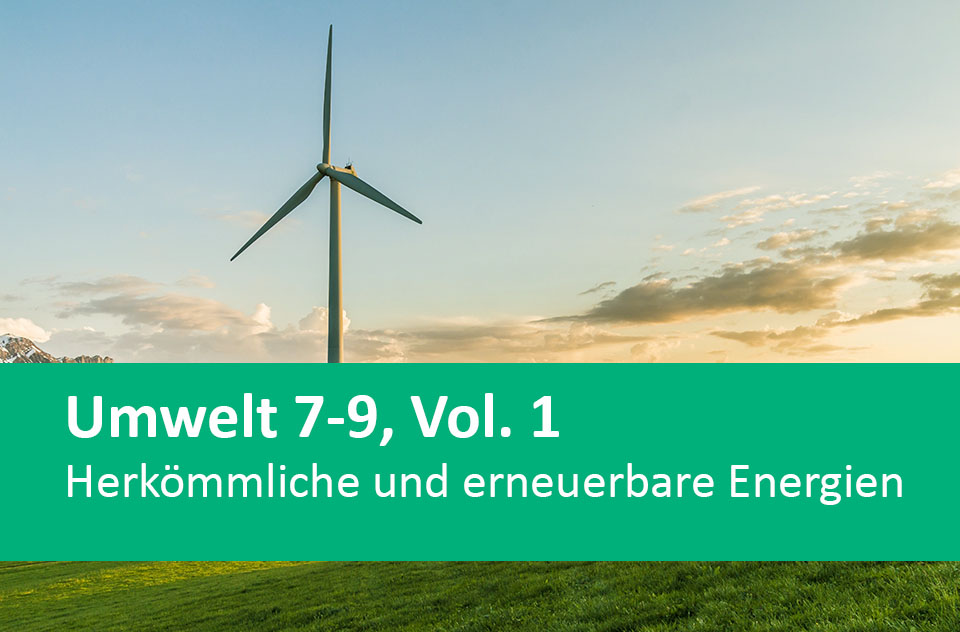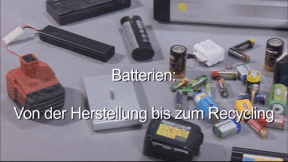
55500813
Herkömmliche und erneuerbare Energien
In unserem Arbeitsheft Umwelt 7-9, Vol. 1 – Herkömmliche und erneuerbare Energien finden Sie 50 interaktive und didaktisch aufbereitete Aufgaben.
Das Medium bietet H5P-Aufgaben an, die ohne zusätzliche Software verwendbar sind. Das Medium enthält interaktive Videos und 50 H5P-Aufgaben zu den
Themen Erdöl, Erdgas, Braunkohle, Energiewende, Biogas. Sowohl die Entstehung der fossilen Energieträger als auch die Funktionsweise von Kraftwerken werden
vorgestellt und mit Übungen vertieft.
Durch interaktive Aufgabentypen wird das audiovisuelle und interaktive Lernen einfach.
Lernen macht jetzt Spaß!
Included Tasks
- 1. Die Energie (1) - Video mit Lückentext
- 2. Die Energie (2) - Video mit Lückentext
- 3. Kohle oder Erdöl? - Video mit interaktiver Aufgabe
- 4. Kernenergie? - Interaktive Aufgaben
- 5. Wasser - ein besonderes Element - Video mit interaktiver Aufgabe
- 6. Die Geschichte der Wasserkraft - Video mit interaktiver Aufgabe
- 7. Kohlenstoffdioxid - Interaktive Aufgaben
- 8. Aufbau und Funktion eines Laufwasserkraftwerks - Interaktive Aufgabe
- 9. Aus Biomasse wird Biogas - Video mit interaktiven Aufgaben
- 10. Zukunft der Energie aus Biomasse - Video mit interaktiven Aufgaben
- 11. Wirkungsgrad der Energiegewinnung aus Biomasse
- 12. Beispiel: Mais - Interaktive Aufgaben
- 13. Wirtschaftsfaktor Biomasse - Lückentext
- 14. Das Prinzip der Kraft-Wärme-Kopplung - Interaktive Aufgabe
- 15. Energie aus Pflanzen - Video mit interaktiven Aufgaben
- 16. Biogas - Lückentext
- 17. Methanogenese - Interaktive Aufgabe
- 18. Energiequellen - Interaktive Aufgabe
- 19. Erdölförderung - Video mit Lückentext
- 20. Verwendung von Erdöl - Interaktive Aufgabe
- 21. Entstehung des Erdöls - Lückentext
- 22. Entstehung des Erdöls - Interaktive Aufgabe
- 23. Was ist Erdöl? - Video mit Lückentext
- 24. Was ist Erdöl? - Interaktive Aufgabe
- 25. Destillation von Rohöl - Interaktive Aufgabe
- 26. Was ist Erdgas? - Video mit Lückentext
- 27. Erdgas - Pro und Kontra - Video mit interaktiven Aufgaben
- 28. Die Nutzung von Erdgas - Bildkarten
- 30. Erdgasförderung - Lückentexte 30. Entstehung von Erdgas - Interaktives Video
- 31. Erdgasvorkommen - Interaktives Video
- 32. Energieerzeugung - Interaktives Video
- 33. Verwendung von Erdgas - Interaktive Aufgaben
- 34. Fakten zum Erdgas - Interaktive Aufgaben
- 35. Verwendungsmöglichkeiten von Erdgas - Interaktives Video
- 36. Braunkohlekraftwerk - Interaktive Aufgabe
- 37. Zukunft der Stromversorgung ohne Braunkohle - Interaktive Aufgaben
- 38. Braunkohle und der Strukturwandel - Lückentext
- 39. Braunkohle - Begriffe - Bildzuordnung
- 40. Abbau von Braunkohle - Bildzuordnung
- 41. Energieträger Braunkohle - Interaktive Aufgaben
- 42. Bedeutung der Braunkohle in Deutschland - Interaktive Aufgaben
- 43. Braunkohle : Fördermengen - Interaktive Aufgabe
- 44. Braunkohlereviere - Interaktive Aufgabe
- 45. Braunkohle - Lückentext
- 46. Erneuerbare und verbrauchende Energieträger- Interaktive Aufgabe
- 47. Erneuerbare Energie - Interaktive Aufgaben
- 48. Klimawandel - Interaktive Aufgaben
- 49. Vor- und Nachteile erneuerbarer Energien - Interaktive Aufgabe
- 50. Energiewende - Finde die Bildpaare
Curriculum-centred and oriented towards educational standards
Matching
5./6. Jahrgangsstufe, Vol. 1
In unserem Arbeitsheft Biologie 5./6. Jahrgangsstufe, Vol. 1 finden Sie 50 interaktive und didaktisch aufbereitete Aufgaben.
Batteries
A battery is a portable source of chemical energy, which is converted to electrical energy as soon as the battery is placed in a circuit. The main principle is the same in almost all batteries. A metal that forms the negative terminal is opposite a positive terminal. The positive terminal is also called anode, the negative terminal cathode. Between the two terminals there is an electrically conductive liquid, the so-called electrolyte. As soon as a battery is placed in a circuit, positive and negative terminals are connected via an external contact and electrolysis takes place. On the way, a current flows from anode to cathode







